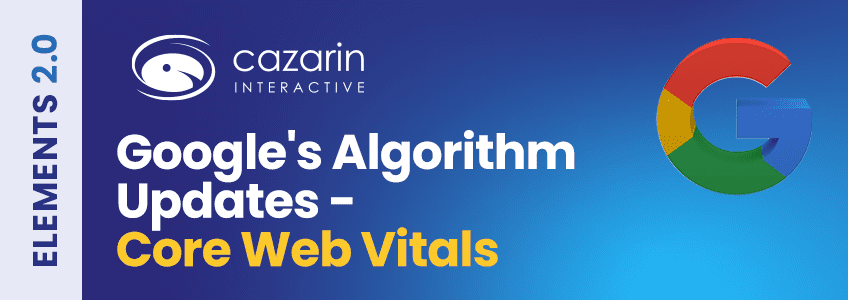
Google’s Algorithm Updates – Core Web Vitals
If you are familiar with Google and its ever-changing algorithm, you know how important it is to stay updated with all the changes if you want your website to rank well on search engine results pages (SERPs). Google announced the latest Google Algorithm Update – Core Web Vitals in 2020 and it’s finally in action as of May 2021.
This latest Google update states that core web vitals and page experience, along with other search factors, will now be ranking factors for websites in search results. Website owners need to ensure that they understand all search ranking factors to ensure their websites remain visible to their target audience.
What Is Google’s Algorithm?
Before we get into what the new updates mean, let’s discuss what the Google algorithm is.
With billions of web pages available on the internet, how would you find useful content when you enter your search query? Google’s ranking system is designed to sort through the billions of web pages and make it easy to find the results you need in seconds.
These ranking systems take approximately 200 ranking factors into consideration when deciding what to show a user when a search is conducted. These include the words in your query, the usability and relevance of the pages, the website’s expertise, your setting, location, and much more. Simply put, the algorithm sorts through content and presents relevant web pages to the user.
What Are Core Web Vitals & How Do They Affect Your Website’s Ranking?
Core Web Vitals are a set of specific factors that Google considers important to a web page’s user experience. These web vitals apply to all the pages on your website. Web vitals should be continuously monitored and measured by website owners because they are critical to your visitor’s user experience and now, your site’s ranking. Each core web vital represents a unique aspect of the user experience, is measurable, and signals the actual experience of the user.
There are three Core Web Vitals:
Core Web Vitals are made up of three specific page speed and user interaction measurements:
Largest Contentful Paint (LCP) – This measures loading performance, specifically, how long it takes a page to load and shows the largest content element on the screen. This is not the length of time it takes the page to load, but how long it takes to show the most important part of the screen from the point of view of a website user.
Google advises that you aim for the LCP to happen within the first 2.5 seconds after the page loads.
First Input Delay (FID) – This measures your website’s responsiveness and the time it takes for the browser to respond to the user’s first interaction. A highly responsive webpage will have a faster reaction time from the browser.
Google suggests an FID of less than 100ms to make a webpage appear responsive.
Cumulative Layout Shift (CLS) – CLS measures a website’s stability as it loads. This is considered its visual stability. The main factors taken into account are how often content move around as the page loads and how stable the page looks as it loads onto your screen.
According to Google, a CLS below 0.1 is good.
These web vitals are ranking signals that are factored into your overall page score and Google’s measurement of your page to determine the user experience.
If you have access to your website’s Google Search Console account, you can find your core web vitals in the enhancements section.
What Are The New Algorithm Updates for Core Web Vitals?
Google’s latest update involves combining core web vitals with other search signals for an enhanced page experience.
The page experience signal now combines Core Web Vitals with the following signals:
- HTTPS
- Mobile-friendliness
- Lack of intrusive interstitials
- Safe-browsing
All these work together to influence the new ranking factors. You now see that the user experience has a remarkable effect on a website’s ranking. It is imperative to ensure you regularly monitor your website’s web vitals to ensure your website remains healthy with Google SEO.
How Will These Updates Affect My SEO?
Speaking of SEO, we know that without a well-developed SEO strategy, your website will not get the traffic you need. Having quality content or optimizing for both mobile search and desktop alone will not be enough to rank well in Google’s search engine. This page experience update means that your website must meet all the ranking factors in order to appear in the search results.
Don’t worry, your SEO efforts are not wasted. Continue to monitor your website and ensure it meets the new ranking requirements.
How Can I Improve My Page Experience?
Before you can improve your website’s page experience, you need to audit your site to see where it currently stands. Google Search Console’s report for Core Web Vitals can provide a detailed overview of what is going on and what you need to change. PageSpeed Insights and Lighthouse can help you to fix any issues you find.
Cazarin knows SEO! Contact Cazarin Interactive for SEO Services!
We stay updated with all the latest trends in digital marketing so that we are able to provide the highest quality work to our clients. Don’t scratch your head and wonder how these Google algorithm updates will affect you. Contact us for our SEO services and we will take care of it for you.
Let us know if we can help you in any way by emailing marketing@cazarin.com.





